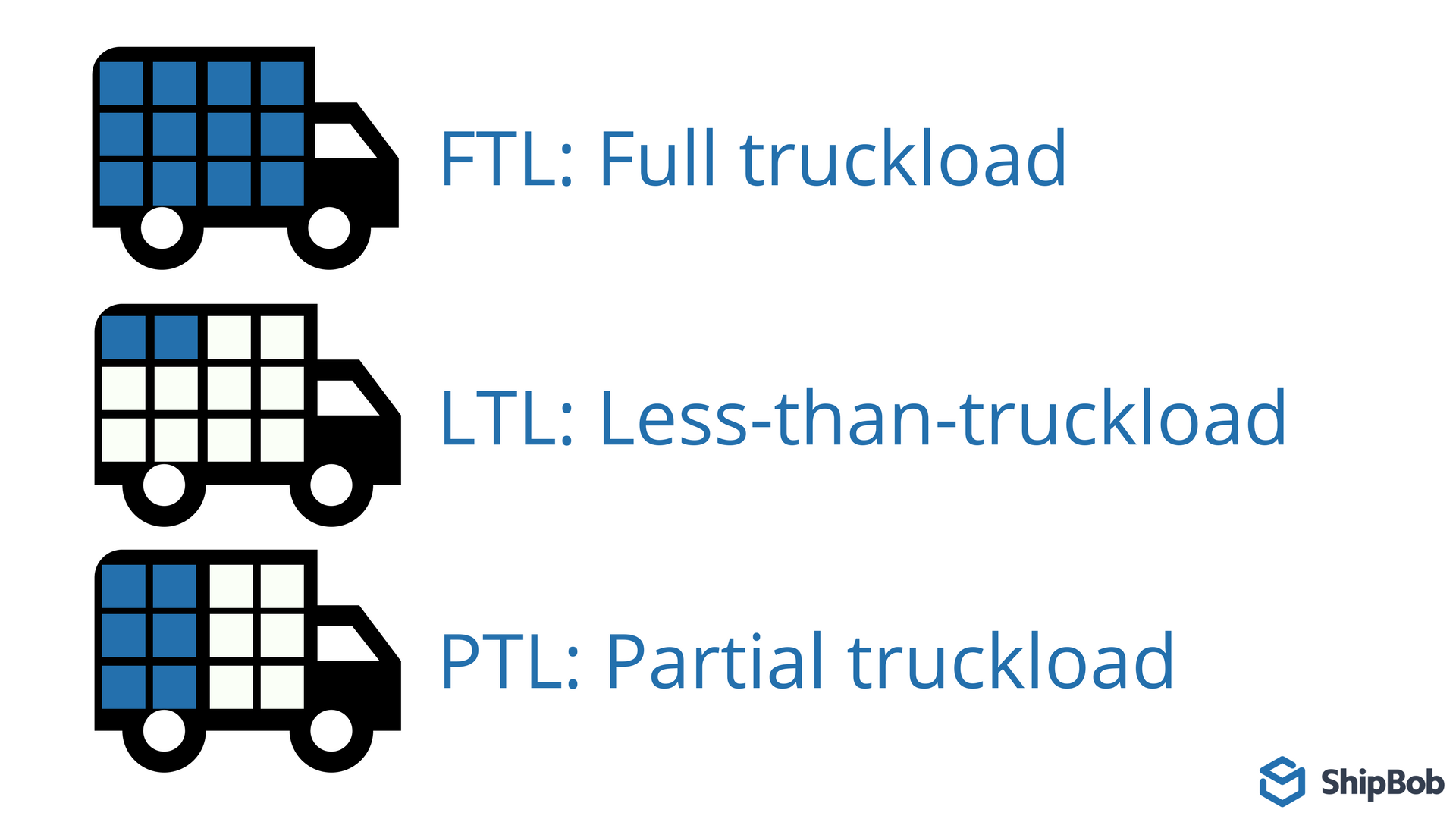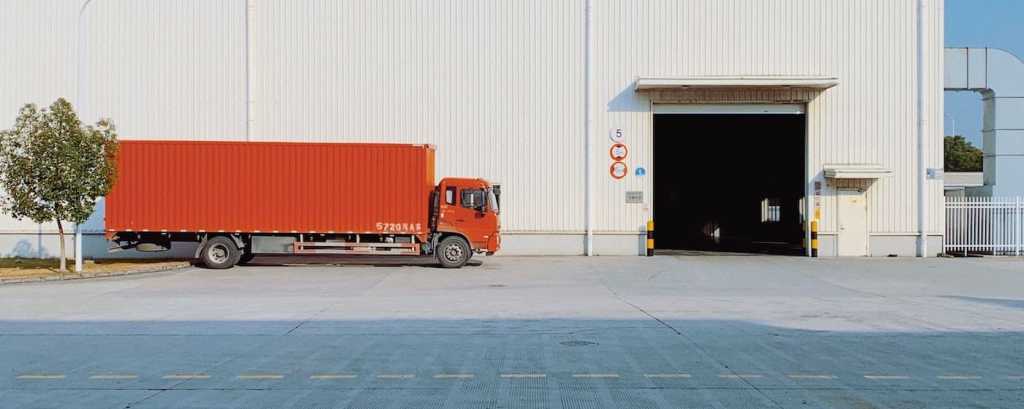Table of Contents
** Minutes
What is full truckload shipping and freight?
Why is there a demand for full truckload shipping?
How much does full truckload cost?
How FTL shipping has been affected by the post-COVID era
Many online businesses across the nation rely on truckload shipping, but maybe don’t understand the differences between truckload options.
Experts at ShipBob and Echo Global Logistics (Echo) understand the importance of educating business owners on how full truckload shipping works.
This article covers when truckload shipping is used, how it’s changed in recent years, and how to evaluate your freight needs.
What is full truckload shipping and freight?
Full truckload shipping (FTL) constitutes direct shipments from pickup at the manufacturer to delivery.
As the name suggests, FTL shipments require a full load, which offers transportation capabilities for shipments requiring additional space.
FTL typically transports one specific shipment, as the nature of the product likely requires additional carrying capacity. For these types of loads, having a full container makes the job much easier.
Full truckload vs less than truckload (LTL)

Though FTL offers additional carrying capacity, less than truckload (LTL), or even partial truckload, is often more commonly used. LTL provides a flexible freight shipping option for clients who need to ship a variety of goods.
Due to the size of LTL shipments, no warehousing is needed as most loads arrive in a timely manner.
The size also allows shippers to only pay for the portion of the shipment they need rather than paying for an entire trailer. This means LTL shipments often carry several orders from separate clients all in one truck.
LTL tip: Secure your cargo
Though insuring your freight is an additional cost, but it will likely save you money down the line.
Since LTL is carrying a big portion of inventory but is also not exclusive to your products, it’s important to make sure you’re covered in case there is shipping damage or shipments get lost.
Providers like Echo Global Logistics offer their own service, EchoInsure+, to ensure all shipments are protected while in transit. To find out more, visit Echo.com.
FTL vs FCL & LCL
Similar to truckload shipping, a full-container load (FCL) and a less-than-container load (LCL) offers different specifications to meet individual shippers’ needs. It is also a term used to describe ocean freight specifically.
Like LTL, FCL shippers purchase the entire space inside a container, benefiting large items and sizable volume shipments.
Shippers frequently utilise LCL when launching new products for rollout. As the product grows in popularity and use, FCL may become necessary as a more efficient and cost-effective method for shipping larger loads.
Why is there a demand for full truckload shipping?
Though LTL may be more widely used, there is a high demand for FTL within the shipping and ecommerce supply chain industry.
As companies cut costs by shipping in smaller loads, it can sometimes be more financially viable for a shipper to send a full load rather than a series of smaller loads.
FTL is often used by shippers moving inventory to big-box retailers or other enterprise merchants for B2B ecommerce.
As the demand for specific goods increases, larger loads may be required to maintain a steady supply chain.
FTL pros
FTL can be beneficial as the full truck carries nothing but your inventory, providing you with greater control over the entire shipment.
With the truck dedicated to the shipper, shipments move faster, more directly, and are less likely to run into obstacles.
Handling times are also reduced when using FTL as the product only makes one delivery. When booking, quote rates will be more readily accessible when deciding between shipping couriers for FTL.
FTL cons
Unfortunately, due to the size and expedited nature of FTL shipments, they tend to cost more. Many shippers prefer LTL on account of the lower rate, despite only accessing a portion of a truck.
Additionally, filling up a full trailer may not always be possible for every shipment as not all products require additional carrying capacity.
This eliminates the opportunity for smaller volume shipments and limits the movement flexibility of cargo. Couriers also may not be able to offer important value-added services such as white glove handling.
How much does full truckload cost?
Weight is one of the most important aspects of freight. Figuring out your freight’s weight and dimensions will determine the most cost-effective and efficient shipping mode.
Additionally, taking the commodity into consideration will reveal any additional care your shipment may require, factoring into the total cost.
How to save money on FTL
Though FTL can be expensive, here is a list of ways to save money and cut down on excessive costs when shipping a full load.
- Streamline internal processing: Make sure your team is working efficiently to prevent minor inconveniences, so you can focus on productivity.
- Structure lead time: Increase your lead time for FTL to allow couriers to structure their time management and give leeway to plan routes and delivery.
- Connect with couriers: Collaborate for better communication with couriers, creating positive relationships, efficient teamwork, and mutual respect.
- Organise accessorial fees: Make sure to budget and account for accessorial charges to prevent your organisation from being penalized for incorrect information.
- Review analytics: Stay informed on analytical changes that allows you to make strategic logistical moves when selecting and managing couriers.
- Establish routines: Regularly manage preferred couriers, monitor reliable lanes, and maintain courier relationships to prevent unwanted financial surprises.
- Have a backup plan: Inevitably, circumstances will prevent a preferred courier from fulfilling your shipment. Having resources like Echo and ShipBob on hand can provide security.
FTL best practices
Here are some tips to look out for when evaluating and working with FTL providers to ensure your needs and shipping requirements are being met.
- Be cautious of additional drop-offs: When the entire truck is dedicated to your delivery, the shipment should move quickly. Without making additional drop-offs, FTL optimises transportation and delivery.
- Maintain courier relationships: Find and maintain a stable relationship with a dependable courier. You can utilise a resource like Echo or ShipBob to help find the best fit. Selecting from a wide network of couriers helps determine nationwide capabilities.
- Keep on techin’: Technology, like the Transportation Management System employed by Echo and ShipBob’s fulfilment platform, analyses past and current shipments to simplify FTL loads, helping you plan, schedule, and manage shipments all in one place.
How FTL shipping has been affected by the post-COVID era
In the wake of COVID-19, disruptions continue to plague the transportation industry.
Unpredictability has become the new normal, creating backlogs for supply chains and fluctuating demands. From labour shortages to a rapidly shifting market, uncertainty calls for decisive and responsible solutions.
Due to significant fragmentation and low barriers to enter, the truckload sector has always seen great volatility. In response to driver shortages, higher truckload rates attract drivers back to the industry.
As access to capacity changes, modes like FTL require drivers, terminals, and warehousing to maintain service. Other modes, like LTL, are slower to adapt to these changes, particularly to situations with limited capacity.
How ShipBob and Echo handle your shipping needs
Finding the ideal courier can be challenging, especially on your own.
Partnering with third-party logistics providers like ShipBob or Echo Global Logistics simplifies the shipping process — no matter where you operate your business or what you need to ship.
Through user-friendly services such as Echo’s EchoShip portal, clients can quote, book, track and manage shipments easily, giving you time back to focus on your business.
Available anytime and anywhere, EchoShip sends real-time updates and supports clients with Echo’s award-winning and dedicated team.
Additionally, incorporating its own insurance solution, EchoInsure+, Echo ensures all shipments Proprietary technology like EchoShip makes shipping simple and provides you with comparable options to determine the best fit for your shipment needs.
Best of all — EchoShip partners with ShipBob, which makes it easier for ShipBob merchants to manage omnichannel fulfilment and shipping in one place.
Full truckload shipping FAQs
Below are answers to common questions about full truckload shipping.
What are the benefits of FTL freight?
Benefits of FTL freight include moving dedicated shipments, remaining cost effective when shipping large loads, reduced handling times, and timely deliveries.
When should FTL freight be used?
FTL freight should be used for shipments requiring additional carrying capacity, large volume shipments meeting a timely delivery, or when shipping larger quantities becomes more cost-effective to meet increasing demand.
Does ShipBob and Echo use FTL shipping methods?
ShipBob partners with Echo to utilise FTL shipping methods. In addition to FTL, Echo offer LTL and temperature-controlled LTL, PTL (partial truckload), intermodal, and warehousing.




